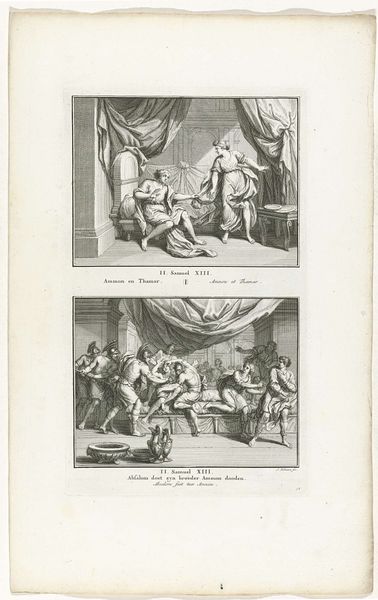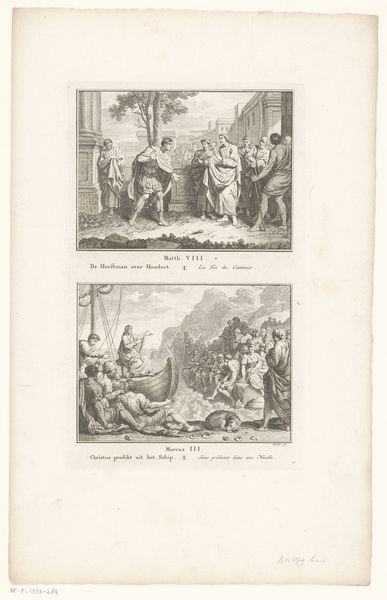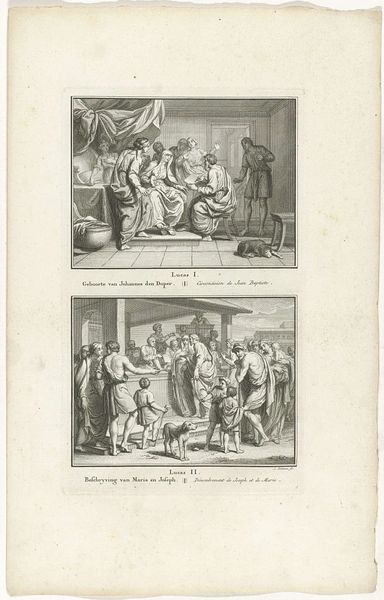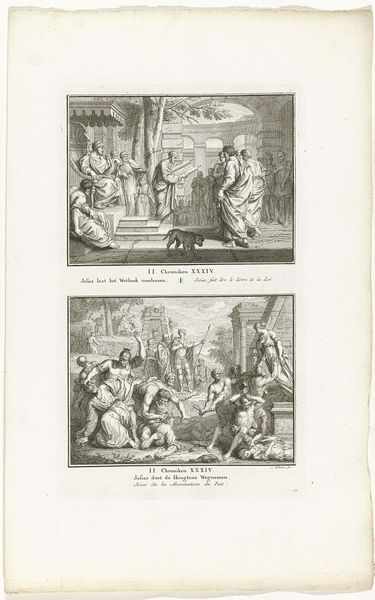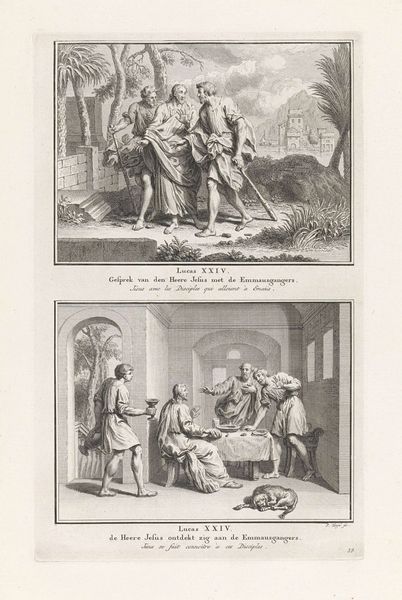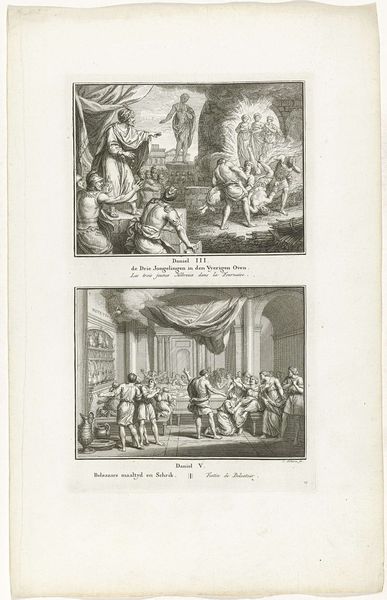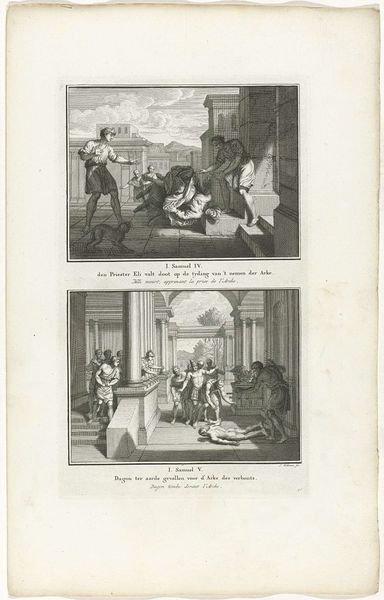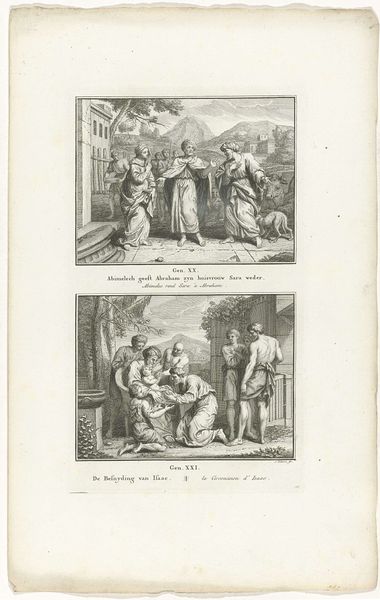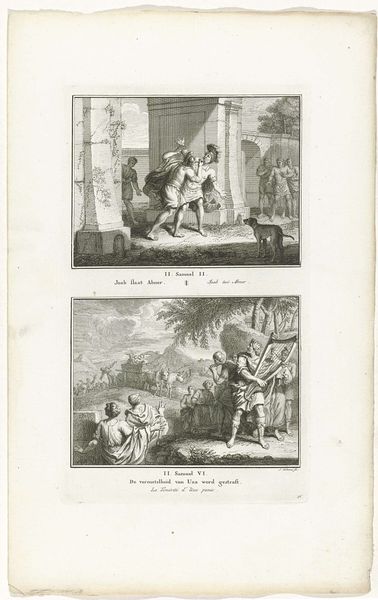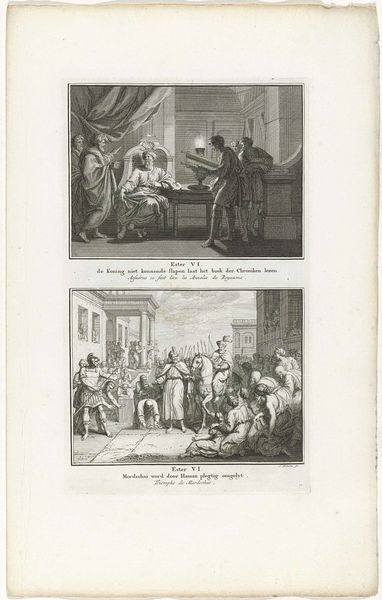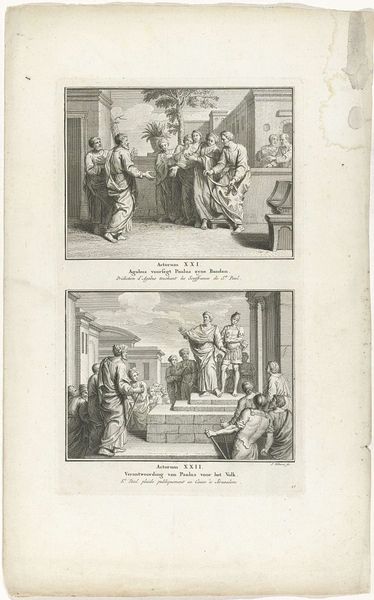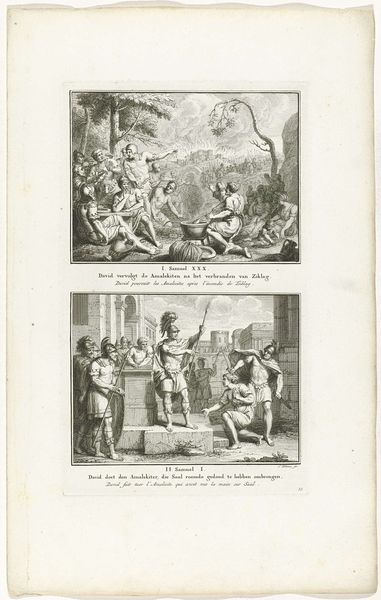
Koning Hizkía verwoest heiligdommen en Jesaja bezoekt de zieke koning Hizkía 1791
0:00
0:00
Dimensions: height 326 mm, width 195 mm
Copyright: Rijks Museum: Open Domain
Curator: This is "Koning Hizkía verwoest heiligdommen en Jesaja bezoekt de zieke koning Hizkía" – or, in English, "King Hezekiah Destroys Sanctuaries and Isaiah Visits the Sick King Hezekiah" – a 1791 engraving by Jacob Folkema, currently held in the Rijksmuseum collection. It's rendered in that delicate line style so typical of engravings. What are your first impressions? Editor: The narrative split into two scenes really strikes me. I'm immediately drawn to the active labor in the upper register – men dismantling idols and smashing what appear to be graven images with such forceful materiality. A violent, physical transformation in contrast with what appears to be a more quiet, reflective scene below. Curator: Exactly. The print depicts two scenes from the Old Testament. The top section portrays King Hezekiah’s religious reforms – his active dismantling of pagan shrines and idols as a central act of religious and political authority. We can situate this within larger narratives of iconoclasm and power throughout history. How does destruction serve to construct identity, or in this case, consolidate power? Editor: Thinking materially, I wonder about the labor involved, not just in the scene depicted but in Folkema's own artistic process. Engraving requires a deep understanding of tools, pressure, and the physical properties of the metal plate. It's a skilled craft. And considering the reproduction of prints, how that labor allows images and therefore ideas to be disseminated more widely. Curator: Yes, and we should also consider the historical context in which this print was made – the late 18th century, a time of enlightenment, revolution, and questioning of established religious and political orders. How would this story of religious reform resonate with contemporary audiences grappling with similar themes of authority, belief, and societal transformation? Was the making of prints a method for democratizing, even popularizing such views at the time? Editor: Fascinating! It really makes you consider how material practices both reflect and actively shape societal values and beliefs. Looking closely shows such purposeful engagement between process, materials, and socio-political factors that shaped both its making and distribution. Curator: Indeed. Thinking through the themes of religious reform and power, we realize that the artwork transcends its literal representation and raises complex, multifaceted questions that remain relevant today.
Comments
No comments
Be the first to comment and join the conversation on the ultimate creative platform.
